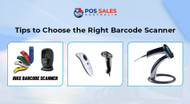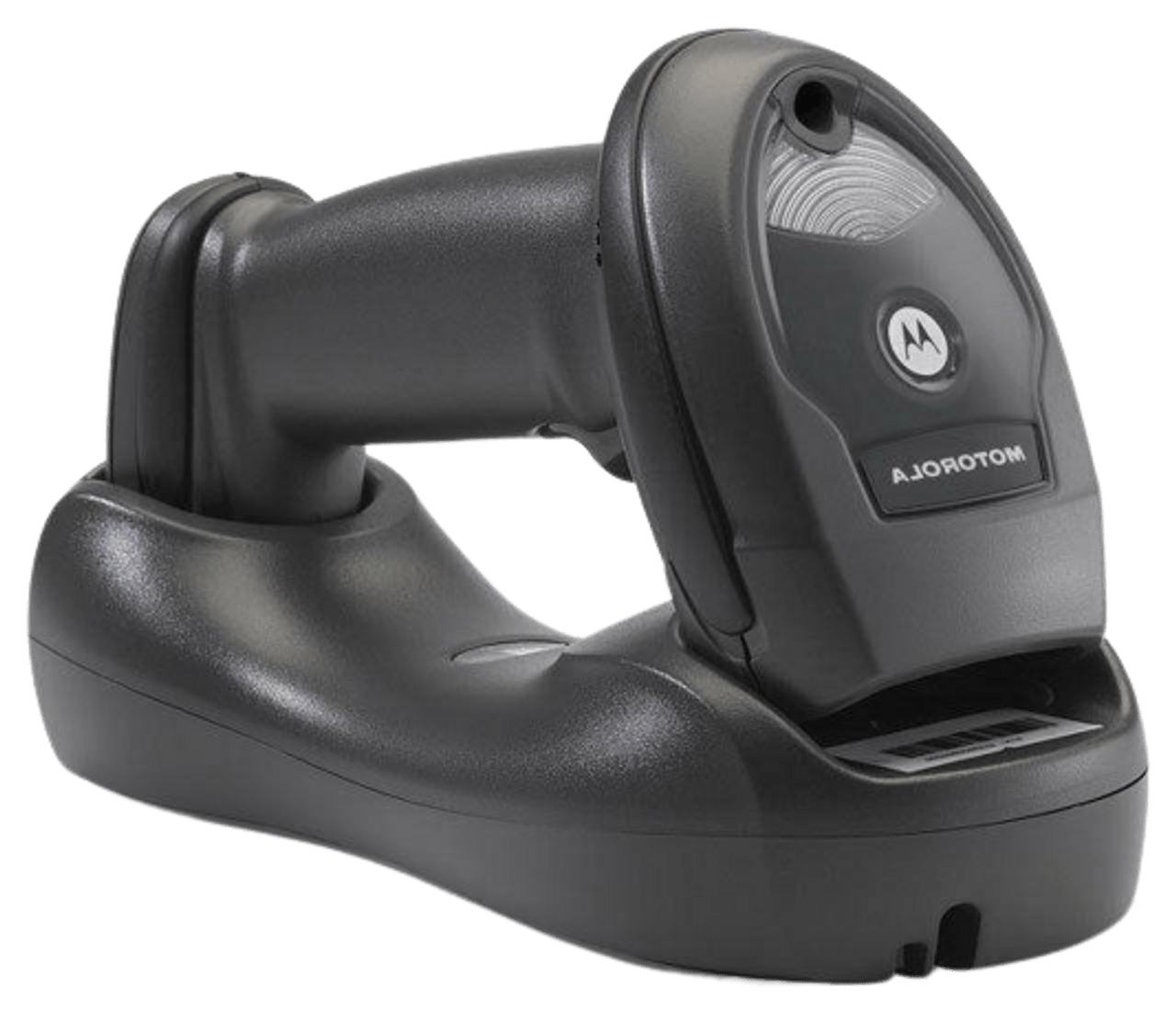Tips to Choose the Right Barcode Scanner
Modern point of sale (POS) systems require robust hardware components to function seamlessly including a point of sale (POS) terminals, monitors, barcode scanners, cash drawers, payment processors, and receipt printers. These devices need to be compatible with each other and can be integrated with the point of sale (POS) software you use. Barcodes and barcode scanners are an integral component of modern-day point of sale (POS) systems that help perform multiple business operations like tracking and managing inventory which helps minimise manual efforts, saving overall time.
The exponential use of barcodes over the past several years is no secret. Different businesses implement barcode technologies to meet their business’s unique needs. Although barcodes were initially used by larger businesses that have a large volume of products in their inventory, nowadays, businesses of all sizes use barcodes. Almost every commodity in today’s world comes with a barcode label attached that contains product-related information encoded within it. To read and decode these barcodes, a robust device known as a barcode scanner is used. Depending on their performance and portability, there are different types of barcode scanners available.
This blog discusses the different types of barcode scanners and the tips to pick the right device for your barcode scanning needs.
What are Barcodes?
Barcodes are systematically arranged patterns of lines and numbers in different widths that when put together form a scannable code. These lines and patterns are arranged in a parallel form with a single barcode representing large amounts of data regarding a certain product. With about 100 billion variations of barcodes available, barcodes can be customised as per your business needs.
Based on the concept of symbiology, barcode scanners read the symbols, identify them, and convert them to useful information such as the type of items, price, origin, and location.
What are the Types of Barcodes?
Essentially, there are two distinct types of barcodes:
- One-dimensional (1D) Barcodes: One-dimensional barcodes are the most common types of barcodes that come in vertical lines of different widths with gaps in between. These combinations of lines and gaps represent the code that the scanner will read. The barcode scanners read one-dimensional barcodes horizontally. Usually, there are 12 digits on one-dimensional (1D) barcodes, corresponding to UPC numbers. The first 6 digits of these barcodes are the identification number of the manufacturer, the next 5 digits contain product-related information, and the last digit is to verify if the rest of the code has been read correctly. One-dimensional (1D) barcodes are designed to store up to 8-25 characters of data. Adding extra bars and spaces to the barcodes to extend the information-carrying capacity of a barcode is called stacking. One-dimensional (1D) barcodes are usually smaller in size making them easily printable. Adding more information on a barcode increases its complexity.
- Two-dimensional (2D) Barcodes: Unlike one-dimensional (1D) barcodes, two-dimensional (2D) barcodes are designed to store more information. Other than simple characters, two-dimensional (2D) barcodes can contain information like images, website addresses, pricing, and more. Usually shaped in square and rectangular forms, the two-dimensional (2D) barcodes can be read both vertically and horizontally. Additionally, two-dimensional (2D) barcodes can encode data in the forms of dots, squares, hexagons, and other shapes. Although capable of storing up to 4000 characters and 7000 digits of data, these barcodes are small in size. These barcodes can be read from any angle and the slightest damage also ensures 100% readability. Unlike one-dimensional (1D) barcode scanners, two-dimensional (2D) barcode scanners can be scanned using smartphones too.
NOTE: QR codes and data matrix codes are the perfect examples of two-dimensional (2D) barcodes that can be read perfectly using a two-dimensional (2D) barcode scanner.
What are Barcode Scanners?
Often referred to as a barcode reader, barcode scanners are optical devices that are designed specifically to read and decode data encoded within a printed barcode. Once the scanner scans the data, it transmits the information from the barcode to the attached computer via the output port of the scanner. Barcode scanners comes with a light source, a light sensor, and a lens that converts optical impulses to electrical signals for computers to catch. You can integrate your barcode scanners with your computer using a USB cable. Bluetooth, or wireless networks.
What are the Types of Barcode Scanners?
There are 4 different types of barcode scanners depending on the technology used, interface, design, and capabilities.
- Pen-type Barcode Scanners: As the name suggests, these barcode scanners are shaped like a pen or a small wand, hence the name. The tip of pen-type barcode scanners come with an LED light and a photodiode. On passing the tip of the barcode scanner over a barcode, the LED light that gets emitted highlights the black and white bars of the one-dimensional (1D) barcodes. The photodiode measures the light that reflects back, indicating the size of the bars, and decoding the barcodes. The barcode scanner then transmits the captured information to the connected computer. Known for their durability, affordability, and fast barcode scanning speed, the pen-type barcode scanners yet require some practice for effective handling.
- Laser Barcode Scanners: More advanced than pen-type barcode scanners, laser scanners are the most popular type of barcode scanners. In these scanners, the laser beam is usually directed at a mirror within the scanner, When the mirror reflects the laser rays across the barcode, the light gets reflected back, showing the areas of the barcodes that are darkened. This reflection converts the decoded information and transmits the data to the connected computer. Used primarily in retail setups, the laser scanners can be used as a fixed countertop devices or used as a handheld barcode scanners. The biggest USP of the laser scanner is that they can scan barcodes from a distance of 6 to 24 inches and the long-range barcode scanners can read from a distance of 2 to 8 feet.
- CCD Scanners: Charge-coupled devices (CCD) barcode scanners are also known as LED barcode scanners and are comparatively expensive devices. These barcode scanners come with hundreds of small LED lights arranged in a single row. When all the lights are directed at the barcode, the sensor fitted within the scanner measures the intensity of the light in front of every bulb, generating a voltage pattern identical to the barcode. The scans from these barcode scanners are usually 100% accurate as they function on the basis of voltage and not reflection.
- 2D Camera Barcode Scanners: Designed primarily to scan two-dimensional (2D) barcodes, these barcode scanners can scan vertically. A two-dimensional (2D) barcode scanner comes with hundreds of tiny lights like CCD barcode scanners but the lights are positioned in multiple rows. When all the lights are flashed at a barcode, a digital image of the barcode is created which is then transmitted to the connected computer. Regardless of how you place the two-dimensional (2D) barcode scanner, it can scan, read, and decode data accurately.
Tips to Choose the Right Barcode Scanner
As already discussed, barcodes are created using dedicated software and barcode scanners are the point of sale (POS) hardware components that are used to scan and read these barcodes. To pick the right barcode scanner, consider the following factors:
1. The Type of Barcode that will be Scanned: The first step to consider while purchasing the right barcode scanner is to determine the type of barcode you would be scanning. Since there are barcode scanners that are capable of reading both one-dimensional and two-dimensional barcodes, you need to pick the one that meets your business requirements the best.
2. Image Quality of the Scanned Barcodes: You need to consider if your barcodes would be susceptible to damage or smudging. In case your barcodes would be exposed to such environments, you need to pick an advanced barcode scanner.
3. Location: Consider where you would be placing your barcode scanner. Whether it would be fixed at a certain location or would you require a mobile device would help you determine the perfect type of device you would require. Pick a corded barcode scanner for a fixed location and a wireless barcode scanner to meet mobile scanning needs.
4. Scanning Environment: You should also consider where you would be using your barcode scanner- outdoor or indoor. Different barcode scanners have different levels of durability. At the same time, there are barcode scanners that can withstand water spray, dust, and high temperatures. However, these devices are comparatively expensive.
5. Scanning Volumes: While purchasing your barcode scanner, you need to consider whether you would be scanning in bulk or individually. You need to pick a barcode scanner with fast speed and adequate battery life in case you have large volumes of printing needs.
6. Light Requirements: There are barcode scanners that are capable of reading in dim lighting and there are other devices that require adequate lighting for quality scanning. Therefore, you need to consider the environment where you would be placing your barcode scanner and check for the lighting in that location.
7. Scanning Distance: Different barcode scanners can scan and read from different distances, ranging from a few inches to several feet. Therefore, it is always recommended to consider the scanning distance while purchasing your barcode scanner.
8. Budget: The most important factor that you need to consider while purchasing your barcode scanner is your budget. Ensure that the device you choose fits your budget while meeting your business requirements perfectly.
Conclusion
Barcode scanners are an essential tool for inventory management and asset tracking. The perfect combination of barcodes and barcode scanners can save immense time and human effort.
There are different types of barcode scanners available. Pick the perfect device that depends on durability, scanning needs, and more. If you are wondering where to purchase the perfect device at the best price, POS Sales Australia is your one-stop destination for your point of sale (POS) needs.
We are Australia’s leading online reseller of premium point of sale (POS) hardware, consumables, accessories, and software, all available at competitive prices. Starting from Nexa Zed 1600 Barcode Scanner USB to Zebra LS2208 USB, Socket S700 BT 1D Barcode Scanner, and more, we have it all. Browse through our selection of barcode scanners and pick the perfect device for your business. Or contact us for a more personalised shopping assistance on your purchase.
For more personalised assistance with your shopping, get in touch with our experts who will help you make an informed decision.


